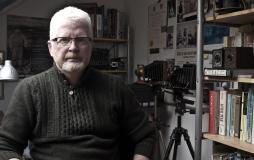The case of the missing skulls from Inishbofin
Toggle
The colonial legacies of universities and museums have become an issue, especially culturally sensitive material like human remains in anthropological collections that were tainted by colonial violence and scientific racism. By Dr Ciarán Walsh, Department of Anthropology
John Millington Synge poked fun at colonial science in The Playboy of the Western World when he referred to an anthropological collection in TCD. "Did you never hear tell," Jimmy asked Philly "of the skulls they have in the city of Dublin, ranged out like blue jugs in a cabin of Connaught?"
In 2020, TCD announced plans to deal with its colonial legacy and I joined real-life descendants of Synge's characters in asking Provost Paddy Prendergast if he had heard of the same skulls. The repatriation of these skulls would, we proposed, be a good way to start decolonising the campus.
Marie Coyne, director of Inishbofin Heritage Museum, learned of the theft of skulls from St Colman's Monastery, Inishbofin after a TCD-sponsored exhibition made headlines on RTÉ in 2012.
The exhibition featured the photograph albums of Charles R. Browne, the Irish 'head-hunter’ who managed the Anthropological Laboratory in TCD and attempted to take skulls from the monastery in 1893.
The islanders, according to Browne, moved the skulls to "some place of concealment" as a precaution. They had good reason to be wary of anthropologists because Haddon and Dixon had taken 13 skulls from the monastery in 1890.
Haddon took a photograph of the skulls in situ as evidence of provenance and wrote up the theft as a thrilling adventure. That story became part of the folklore of colonial science in Ireland, the best example of which is Timothy Collins's 1993 treatment of Haddon's "head-hunting passion".
Coyne asked if anyone had seen the skulls and Seán Mac an tSíthíg raised the possible return of the skulls in his report for RTÉ News. A spokesperson for TCD confirmed, according to Mac an tSíthig, that it "no longer houses the collection, its current location unknown".
Two years earlier, however, TCD published a catalogue of its academic and artistic collections that listed a collection of 47 human skulls in the anatomy museum. Were these the missing skulls?
Haddon informed the Royal Irish Academy in 1893 that the "thirteen crania from the island of Inishbofin form part of a collection of Irish crania that I gave to the Anthropological Museum of Trinity College, Dublin, in 1890."
Haddon’s papers in Cambridge provided more evidence and TCD granted access to ‘Old’ Anatomy in 2014. The Department had moved to new premises on Pearse St. and Siobhán Ward was making an inventory of historical material discovered in ‘Old’ Anatomy.
I emailed Marie Coyne to tell her that I had seen the skulls, still "ranged out like blue jugs" in display cases in the ‘Skull Passage’– a storage area behind the theatre – and clearly labelled "Inishbofin: Haddon & Dixon". The collection included one skull from the Aran Islands and ten from St Finan’s Bay.
This triggered a five-year investigation of Victorian anthropology - the skull-measuring business - in Ireland in partnership with Maynooth University, TCD and the Irish Research Council. Brainstorm published the main findings in 2020, but the question of return and burial remained unresolved.
This was surprising, given that TCD repatriated Maori remains in 2009 "to honour the Maori wish to return these remains to their homeland".
This set a precedent for the Haddon & Dixon Collection, but negotiations with the working group appointed by TCD to develop the Old Anatomy Museum stalled in 2019, before fate intervened in a way Synge would have appreciated.
The killing of George Floyd on 25th May, 2020 galvanised the Black Lives Matter movement and triggered a spin-off campaign to remove statues of slavers and colonists from public spaces.
The colonial legacies of universities and museums became an issue, especially culturally sensitive material like human remains in anthropological collections that were tainted by colonial violence and scientific racism.
Coyne and I were joined by Pegi Vail, an anthropologist at New York University. Her grandmother emigrated from Inishbofin and Coyne and Vail are aware – personally and professionally – of the link between ancestry and place that is embodied in these skulls and carried in the genetic material they contain.
This flipped the conversation from an abstract discussion of slavery in the context of statues and buildings to the personal consequences of colonial science for communities in the west of Ireland.
We contacted the Provost and proposed a small act that would have a big impact on his plans to decolonise the campus: the repatriation of the Haddon and Dixon skulls.
The provost asked the Dean of the Faculty of Health Sciences and the Head of the School of Medicine about the skulls and this set the scene for the final act in Synge’s story: A discussion on how to decolonise ‘old’ anatomy.
That means honouring the wishes of communities in Inishbofin, the Aran islands, and the Glen to have the skulls returned to their "homelands" using the protocols developed in the Maori repatriation.
